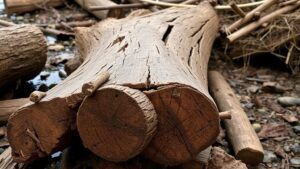Surveying Coastal Erosion Areas for Newly Exposed Shipwreck Remains
Surveying Coastal Erosion Areas for Newly Exposed Shipwreck Remains
Coastal erosion poses significant threats to marine archaeology, revealing previously submerged shipwrecks while simultaneously endangering their integrity. This article explores the methodologies employed in surveying coastal erosion areas, focusing on the identification, excavation, and preservation of newly exposed shipwreck remains. It highlights case studies, discusses both historical and contemporary significance, and provides recommendations for future research in this field.
Introduction to Coastal Erosion and Marine Archaeology
Coastal erosion, defined as the loss of land due to the action of waves, currents, and tidal forces, is a natural phenomenon exacerbated by climate change and human activity. According to the United Nations Environment Programme (UNEP), approximately 70% of the world’s coastlines are undergoing erosion at alarming rates, with some regions losing as much as 10 feet of shoreline annually.
This continuing erosion not only poses challenges for coastal communities but also unveils shipwrecks that provide valuable insights into historical maritime practices. Shipwrecks serve as time capsules, offering information about shipbuilding techniques, trade routes, and maritime economies. Their exposure often brings urgent need for documentation and preservation efforts.
Methodologies for Surveying Shipwreck Remains
Effective surveying of coastal erosion areas requires a multi-faceted approach, encompassing both traditional methods and advanced technologies. A combination of the following methodologies proves beneficial:
- Visual Surveys: Initial assessments conducted by teams of marine archaeologists who visually inspect areas of concern.
- Remote Sensing: Utilizing aerial photography, satellites, and drones to capture detailed images of coastal zones. Recent studies suggest that drone imagery can enhance detection efforts by up to 30% compared to traditional methods.
- Geophysical Survey Techniques: Employing sonar scans and magnetometry to identify underwater structures without disturbing the seabed directly.
- Geographic Information Systems (GIS): Integrating spatial data to analyze and map the effects of coastal erosion alongside the locations of shipwrecks.
Case Studies of Shipwreck Discoveries
Several notable case studies illustrate the importance and challenges of surveying newly exposed shipwreck remains:
- The HMS Victory: The wreck of Admiral Horatio Nelsons flagship was uncovered in 2008 off the coast of Spithead, UK. A combination of sonar and diving expeditions revealed significant portions of the ship, leading to extensive research on naval warfare in the 18th century.
- The San Diego: The Spanish galleon sank in a storm off the coast of California in 1602. A recent survey in 2021 revealed additional artifacts, highlighting the potential for uncovering new archaeological materials as coastal erosion continues.
Challenges and Ethical Considerations
Despite the advancements in surveying techniques, several challenges persist:
- Environmental Conditions: Variable weather and sea states can hinder survey efforts, leading to missed opportunities for recovery.
- Legal and Ethical Issues: The excavation of shipwrecks often sparks debates regarding ownership and preservation ethics. The UNESCO Convention on the Means of Prohibiting and Preventing the Illicit Import, Export and Transfer of Ownership of Cultural Property underscores the need for careful consideration in this area.
Future Directions and Conclusion
As climate change intensifies coastal erosion, the necessity for systematic surveying of shipwreck remains becomes increasingly urgent. Future research should focus on:
- Innovative Technologies: Incorporating advancements in artificial intelligence and machine learning to analyze survey data more effectively.
- Interdisciplinary Collaboration: Promoting partnerships between marine archaeologists, environmental scientists, and policymakers to address the multifaceted issues associated with maritime archaeology.
To wrap up, the ongoing study of coastal erosion and its impact on shipwreck surfaces provides a vital opportunity to unearth and preserve humanity’s maritime heritage. By employing comprehensive survey methodologies and acknowledging the complexities surrounding archaeological ethics, the field can better navigate the delicate balance of discovery and preservation.



